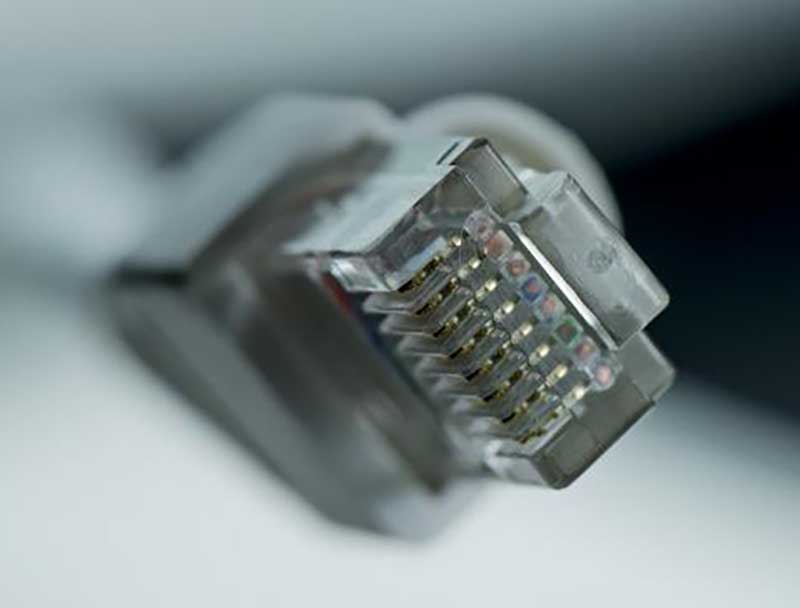 Broadband
Broadband Pandemic in India has given a boost to the number of users using fixed-line broadband. During the pandemic, the professionals engaged in work from home and the children in a study from home which increased the demand for broadband connection as the mobile data has its own limitation in terms of speed and reliability. The latest report by TRAI, telecom regulator of India has indicated that the broadband connections in India grew by 2% on average every month since July 2020 every month. Before the pandemic, the broadband connection was growing only at a rate of 0.5% in a month. Till March 2021, the number of broadband connections in India was a whopping 22.8 million.
The hybrid work model has made internet connection a necessity
Millions of professionals were asked to work from home during the pandemic and this resulted in a hybrid work model. The hybrid work model placed wired internet connections into basic utilities. In an average Indian family, at least 5-6 devices require an internet connection which makes a fixed broadband connection a basic necessity. Broadband connections are not only popular in metro cities but also in tier-two cities like Jaipur, Mangalore and Varanasi. The high demand for fixed broadband connections was visible in both Airtel’s fibre connection and JioFiber, both of which acquired a huge customer base during the lockdown. Further, RIL commented that the data consumption in the JioFiber grew by 3.5 times compared to the previous year.
Massive spike both in data usage and consumption
Major broadband providers have seen a massive spike in data usage and new connections since the onset of the pandemic. Different broadband providers have provided different rates of growth but the only thing common was massive growth for sure. Even though the broadband connections are increasing, it needs to be noted that the teledensity of wired broadband in India is 1.5% which is immensely low compared to other countries like Japan, China and the US. In scenarios like this, it becomes highly important to optimize the router to ensure that it is able to fully utilize the potential of the broadband connections. Apart from buying a good router, a few basic customizations in the settings of the router can ensure speed optimization. For making the customization, a user can either visit 192.168.1.1 or 192.168.0.1 from the web browser to visit the Setting page of the router. The low teledensity of the wired broadband can be attributed to intensive labour demand, the requirement of high capital and the involvement of different levels of bureaucracy for laying out the fibre optic cables.
There is a need to increase penetration of wired broadband
To make the dream of Digital India true, it is important to speed up the process of laying out the fibre infrastructure to ensure that more geography is covered The increased wired broadband connection will further improve the 4G experience of the users on the smartphones as the broadband connection will free the internet traffic which is diverted to mobile networks for good.
Broadband penetration sees the rural-urban divide
According to a report by Deloitte, the national average broadband penetration is 51% for the last three years. However, the broadband penetration in rural India is only 29.1%. In addition to that, the fixed broadband penetration is abnormally low with only 7.5% of the households having it. In the report, Deloitte has stated that the challenges in the mass adoption of broadband connection in India include infrastructure deployment, digital literacy and affordable devices. Having a good high-speed broadband connection is important for creating a technologically sound country that can further adopt advanced technologies like the internet of things and cloud technology. Further, having broadband ensures inclusive growth of the country that will encompass the social, economic and business segments.
From 2018 to 2020, the cloud market of India has almost doubled from the US $2.5 billion to the US $4.5 billion and it is expected that it will further grow to US $7 billion by the end of 2023. Mobile data consumption has only increased and now, the demand for broadband connection has indicated that slowly but steadily, the demand for internet is increasing and it is becoming a part of essential service and need.
Support Our Journalism
We cannot do without you.. your contribution supports unbiased journalism
IBNS is not driven by any ism- not wokeism, not racism, not skewed secularism, not hyper right-wing or left liberal ideals, nor by any hardline religious beliefs or hyper nationalism. We want to serve you good old objective news, as they are. We do not judge or preach. We let people decide for themselves. We only try to present factual and well-sourced news.







